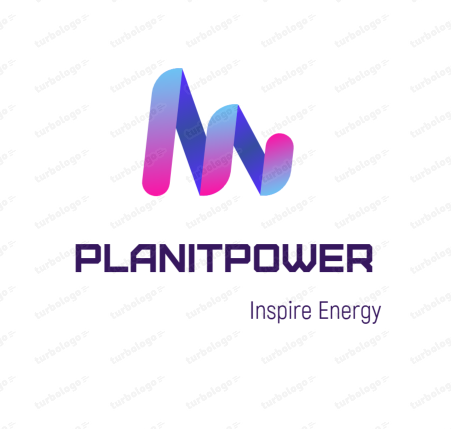
Beaucoup de gens ont l’intention d’investir dans un nouveau bâtiment mais hésitent encore à choisir les concepts de construction qu’ils doivent considérer!
The actual turbulent energy scene, with rarefication of the fossil fuels, coupled with their high impact on our environment, forced many people to give more attention to this problem, and it started to appear a public awareness toward more sustainable energy use. Building a new personal house it’s a life investment and has a great impact on your future energy bills. Let’s see together what the main sustainable building concepts are.
Maison passive
Passive buildings are the leading among sustainable building concepts that fits any climate condition. The goal is to build more comfortable, environmentally friendly, and affordable homes and buildings.
But to be considered passive, a building must fulfill some requirements:
– Space heating:
The energy demand for space heating must not exceed 15 kWh/m2 of usable living space per year (kWh/m²/year).
– Space cooling:
Space cooling needs must be less than 15 kWh/m² per year.
– Primary energy demand:
Total energy consumption: The total energy consumption may not exceed 120 kWh/m²/year. This includes all energy consumption within the house.
– Airtightness:
The building must achieve a high level of airtightness. During a pressure test (Blower Door Test), air changes per hour (n50) must be less than 0.6 at 50 Pa (pressure difference). This helps prevent heat loss through air leakage.
– Thermal comfort:
Living areas should be comfortable all year round, with no more than 10 percent of the hours in a given year exceeding 25°C, ensuring cooling is not over-relied upon during the summer.
– Ventilation with Heat Recovery
A mechanical ventilation system with heat recovery (typically 75%-95%) is essential to maintain air quality and minimize energy loss from ventilation. Fresh air is provided without losing heat, reducing the need for additional heating.
– U-Values (Thermal Insulation)
Passive Houses require superior insulation to minimize heat loss. The U-value (thermal transmittance) of windows, walls, roof, and floors should be as low as possible.
- Windows typically have a U-value below 0.8 W/(m²K).
- Walls, roofs, and floors must also be highly insulated, generally below 0.15 W/(m²K).
– Solar Heat Gains and Shading
The house should be designed to maximize solar heat gains in winter (through optimal orientation and window placement) while using shading techniques to prevent overheating in summer.
– Passive House Certification
To obtain Passive House certification, buildings must meet these energy and air quality performance metrics and undergo testing and verification through an accredited certifier (e.g., the Passive House Institute).

To achieve those requirements, architects use intelligent passive design based on orientation for optimal management of the sun and shade alongside five main principles:
– Optimizing building orientation and form (compactness)
– High-performance insulation:
– Air tight building envelop
– High-performance windows and glazing
– Use of Renewable Energy and Passive Heating Solutions
– Shading and overhangs
– Sustainable and Locally Sourced Materials
– Energy Monitoring and Smart Systems
– Thorough Design and Execution
Bâtiment à énergie quasi nulle ou bâtiment à faible consommation d’énergie
The Nearly Zero Energy Building as referred in the European directive on the energy performance of buildings or known as low energy buildings in other, as defined in the Directive, need to consume very little energy. Onsite energy production from renewable sources covers the small residual part. Today, the concept of nearly zero energy building (nZEB) has gained great international attention. It represents the principal target of the next generation of buildings.
However, the exact criteria to define whether a building a nearly zero energy or not vary from one country to another. For example, in Germany, a low-energy building needs to consume less than 15 kWh/m² per year and its annual primary energy requirements need to be under 120 kWh/m² per year including electrical appliances.
Bâtiments a énergie zéro
A Zero Energy Building (ZEB), also known as a Net Zero Energy (NZE) building, is a building with net zero energy consumption, meaning the total amount of energy used by the building on an annual basis is equal to the amount of renewable energy created on the site or in other definitions by renewable energy sources offsite, using technology such as heat pumps, high-efficiency windows and insulation, and solar panels
Bâtiment a énergie positive
Net-positive energy buildings are technically feasible but require for sure higher investments. The European Commission defines a net-positive energy building as one that on average over the year produces more energy from renewable energy sources than it imports from external sources. This is achieved using a combination of small power generators and low energy building techniques, such as passive solar building design, insulation, and careful site selection and placement.” (European Commission, 2012.)
In the US, however, a net-positive energy building is a building that generates On-site its own energy needs from renewable sources.
Conclusion
Sustainable building concepts like Passive Houses, net-zero energy buildings, and other energy-efficient designs represent the future of construction. By prioritizing minimal energy consumption and maximizing occupant comfort, these designs reduce reliance on traditional heating and cooling systems and promote the use of renewable energy. Not only do these approaches contribute to a lower environmental impact, but they also offer long-term financial savings through reduced energy costs. As global energy standards and environmental regulations continue to evolve, adopting these innovative building concepts is essential in creating resilient, eco-friendly communities that meet both current and future energy challenges.
By embracing the principles of energy efficiency, airtightness, thermal insulation, and smart technologies, architects and builders can ensure that homes and buildings are not only sustainable but also enhance the quality of life for their occupants.









